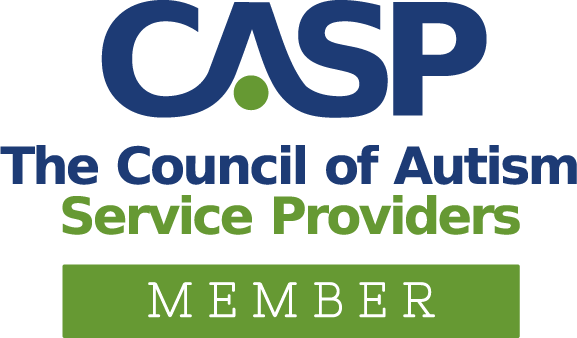Table of Contents
How Does Extinction in ABA Therapy Address Challenging Behaviors?
Applied Behavior Analysis (ABA) therapy is one of the most influential and widely used interventions for individuals with autism spectrum disorder (ASD). Central to ABA therapy is the principle of reinforcement, which involves increasing or decreasing the likelihood of a behavior occurring using rewards or consequences. Within this framework, extinction in ABA therapy acts as a crucial tool for modifying behavior patterns.
Extinction refers to the process of withholding reinforcement for a previously reinforced behavior. When a reward no longer follows a behavior, it gradually weakens and eventually disappears. In ABA therapy, the therapist implements extinction strategically to reduce unwanted behaviors. For instance, if a child with ASD throws a tantrum to get a toy, extinction would involve not giving them the toy during the tantrum. Over time, the tantrums are likely to decrease as the child learns they are not an effective way to get what they want.
If you are a parent of a kid on the spectrum showing complex traits, you may wonder: “How does extinction in ABA therapy address challenging behaviors?” Keep reading this blog by ABA Centers of America and the significance of this behavioral technique and its application in addressing challenging behaviors in individuals with autism.
The Essence of Extinction
According to the Journal of Autism and Developmental Disorders, extinction occurs when rewarding consequences no longer follow a previously reinforced behavior. This lack of reinforcement leads to a decrease in the behavior over time. In essence, it applies the understanding that behaviors continue because individuals “reward” them. If these rewards cease, so too, and eventually, does the behavior.
Implementing extinction involves identifying and withholding the reinforcement that maintains an unwanted behavior. For example, if a child learns that screaming leads to gaining attention, therapists will work to stop providing attention after screaming episodes. It’s essential, however, always to give an alternative, appropriate means for the individual to communicate their needs.
Applying Extinction in ABA Therapy

ABA therapists apply various techniques to modify behavior, and extinction is one such strategy. Extinction is essentially the removal of reinforcement for a previously reinforced behavior, leading to a decrease in the frequency of that behavior over time. Let’s break down how ABA therapists employ extinction in therapy sessions:
Identifying Target Behavior: A crucial initial step for the therapist is to determine the behavior they want to decrease. This behavior could be anything from tantrums to repetitive actions or verbal outbursts.
Understanding Reinforcement: Before implementing extinction, therapists analyze what reinforces the target behavior. Reinforcement can be anything that increases the likelihood of a behavior occurring again, such as attention, tangible items, or escape from a task.
Removing Reinforcement: The therapist identifies the reinforcers and deliberately withholds them when the target behavior occurs. For example, if the child screams to gain access to a tablet, the therapist might refrain from giving them the tablet immediately. Instead, the therapist could wait until the child engages in a more appropriate behavior, such as asking calmly or using a communication device effectively.
Teaching Alternative Behaviors: While extinction focuses on decreasing unwanted behavior, therapists also work on teaching alternative, more desirable behaviors. This teaching could involve the individual in finding appropriate ways to communicate their needs or cope with frustration.
Challenges and Considerations
While extinction can be a highly effective intervention, it has challenges. One of the primary challenges associated with extinction is the phenomenon known as an “extinction burst.” It refers to a temporary increase in the frequency, intensity, or duration of the targeted behavior after the removal of reinforcement. When an individual realizes that their usual behavior no longer yields the expected outcome, the individual may initially respond by intensifying their efforts. For individuals with autism, this can manifest as escalated or more intense behaviors, which can be challenging for caregivers and practitioners to manage.
Consistency and support from caregivers and practitioners are vital during the phase of an extinction burst and throughout the extinction process. Inconsistent application of extinction can inadvertently reinforce the problematic behavior, making it more challenging to reduce or eliminate over time.
Additionally, it’s crucial to acknowledge that while ABA therapy endeavors to modify harmful behaviors, it does not aim to alter the fundamental essence of an individual or their personality. Some behaviors may pose significant risks or lead to dangerous consequences if ignored. Thus, it becomes imperative for professionals to explore and consider alternative therapeutic approaches tailored to the specific needs and circumstances of each person.
ABA Centers of America and ABA Therapy
Extinction provides a systematic approach to address challenging behaviors. When implemented thoughtfully and ethically, extinction can lead to significant improvements in behavior and quality of life for individuals with autism and their families.
At ABA Centers of America, we don’t aim to change the client’s personality but rather to achieve a balance where harmful behaviors do not impede the full development of children and teenagers with ASD. Our empathetic therapists work diligently to promote positive skills and behavioral changes according to each individual’s abilities.
Neurodiverse families in New Hampshire and Massachusetts benefit from proven ABA therapy. If you’d like to join our community, please call us at (844) 923-4222 or schedule a free appointment with our specialists.







